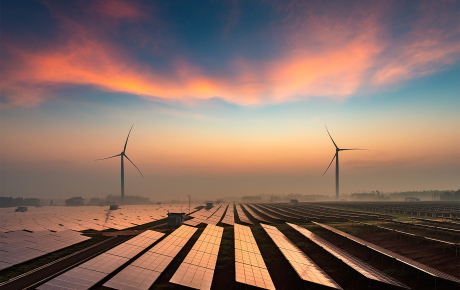
Wind Energy in UK and Europe, making the transition work
Ahead of the COP26 meeting of world leaders in Glasgow later this month, the latest Intergovernmental Panel on Climate Change (IPCC) report starkly set out the scale of the climate emergency facing the world. Unless carbon emissions are slashed, irreversible climate damage cannot be avoided, it states. And therein lies the growing importance of renewable energy.
Several European countries are already looking to rapidly accelerate the amount of renewable energy they generate and consume by harnessing wind power.
“In the UK and more broadly Northern Europe, we are very fortunate to have some of the best potential sites to generate power from wind,” Louis Cozon, Energy underwriter at Hiscox London Market.
In fact, wind power has become a centrepiece of the European Union’s (EU) ambitious plans to become carbon neutral by 2050, in line with the Paris climate agreement’s goals. Its wide-reaching “Fit for 55” package – named because they would put the EU on track to reduce its carbon emissions by 55% in 2030 from 1990 levels – includes a target of deriving 40% of its energy from renewable sources within 10 years.
This means the bloc would require over 450 giga watts (GW) of wind power capacity by 2030, says Wind Europe, the industry’s mouthpiece – more than double today’s capacity. To achieve that goal, the EU will need to install 30 GW of new wind farms every year between now and 2030 – a major acceleration in the expansion of wind energy, and well above what the wind power sector is currently expecting to build.
Just as the deep and turbulent waters far off the north-eastern coast of Scotland became known for their large reserves of oil and gas, they are now increasingly seen as being a rich source of abundant wind power. So much so that the UK’s Prime Minister, Boris Johnson, has said the country could be to renewable energy what Saudi Arabia is for oil.
The largest wind turbines are now four times bigger than their original predecessors 20 years ago. Where a turbine 10 years ago might have produced 1.5 megawatts of power (generating enough electricity to power a few hundred homes), now they can deliver 12 megawatts. Siemens-Gamesa is planning to build and install the first 14MW turbine this year, with rotors that are the diameter of two Wembley stadium football pitches laid end to end.
Floating offshore windfarms – in which turbines are tethered to the seabed by mooring lines – are in their early stages of development but over time are set to make up a larger portion of the renewables mix, especially as most of the offshore wind power is to be found further offshore, where winds tend to be stronger but the water is too deep for the existing generation of fixed-foundation turbines to be built. For example, the energy generated by wind turbines in the deep waters of the North Sea could meet the EU’s electricity consumption four times over, a 2013 study found.
Big economic and engineering challenges remain, and one of the COP26 meeting’s defined goals is to ‘mobilise public and private finance to unleash the trillions that are needed to power us towards net zero by the middle of the century.’ The insurance market is already stepping up to provide the risk finance which will help the fast-growing wind energy industry expand to realise its potential and keep up with demand.
“Insurance has an important part to play in enabling this transition to wind energy to take place and as someone who has been working in the energy insurance market for some time it’s personally very exciting to see the energy sector address new challenges and opportunities, and to evolve. Hiscox has provided cover to a wide range of clients operating in the energy sector for many years and as the sector evolves, so too will we, as we remain committed to providing the products and solutions that are required as the sector transitions towards a sustainable future,” Cozon says.




